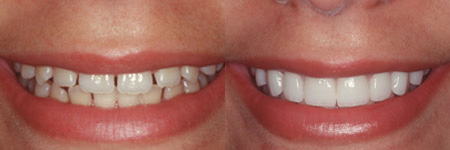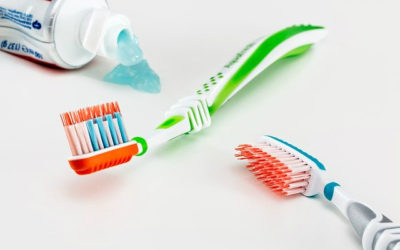Achieving the best smile is something that many people around the world wish for. There are several dental and cosmetic dentistry procedures that can enhance your smile. In this article, we will talk about the difference between two common techniques – dental bonding and dental veneers.
What is Dental Bonding?
Dental bonding is a cosmetic dentistry process that uses a composite resin to mask dental flaws and imperfections. The composite resin is a dense, putty-like substance that is attached directly to the natural teeth, at the same time, color-matched, shaped, molded, and hardened directly on the teeth. The entire process takes place and get’s completed in a single day. Bonding typically does not require anesthesia, sedation, or extensive preparation, as it is usually painless. This process or technique is a quick fix and ideal for people who have minor oral imperfections and can be used to shape your teeth, fill up gaps or cracks, restore broken teeth, or cover up decayed or discolored teeth. Dental bonding can protect your teeth from further damage.
Pros
-
Dental bonding is an easier and faster process
-
It is less expensive than veneers
-
Less portion of a tooth needs to be prepared or drilled and polished for the bonding process
Cons
-
Unlike veneers – coffee, tea, wine, and smoking can stain the material used in the process
-
Dental bonding cannot correct intense dental flaws or cannot completely makeover your smile
-
Dental bonding is an emergency and temporary solution. It last for a very short period, say for about 3-5 years.
What are Dental Veneers?
Dental veneers are thin shells of dental porcelain that are attached to the enamel on the outside of the natural teeth to cover the front part of your teeth. Veneers are custom made especially for individual patients to match the teeth and to fit flawlessly into the mouth. The process includes reshaping the teeth by removing some part of tooth enamel to fit the thickness of the veneers. Then, the impressions of the prepared tooth are made and given to the laboratory technicians for making dental veneers. The furnace-baked, strong veneers are then attached to the teeth. This process generally takes 2-days or sittings with the dentist. Veneers can conceal and cover a range of similar dental issues that are fixed by the dental bonding technique.
Pros
-
It is nearly impossible to tell the difference between veneers and natural teeth as they are custom made for each client and are nearly translucent.
-
They don’t stain from coffee, tea, wine, and smoking
-
Veneers last longer, for about 5-20 years, and generally do not break
Cons
-
Dental veneers are expensive
Now that you know the difference between these two cosmetic dentistry techniques, you can select the best one to suit your ease and expectations. However, the choice between dental bonding vs. dental veneers isn’t that simple. To make a correct choice, you can get in touch with us. Downtown Dental in Edmonton has a qualified team of dentists that help their clients in maintaining their best dental health.



